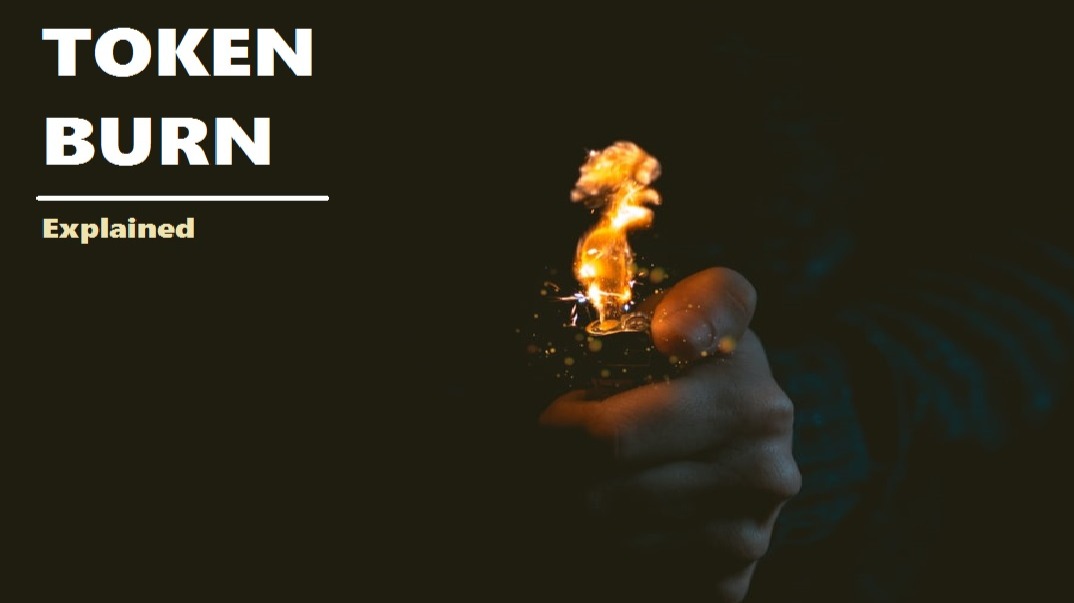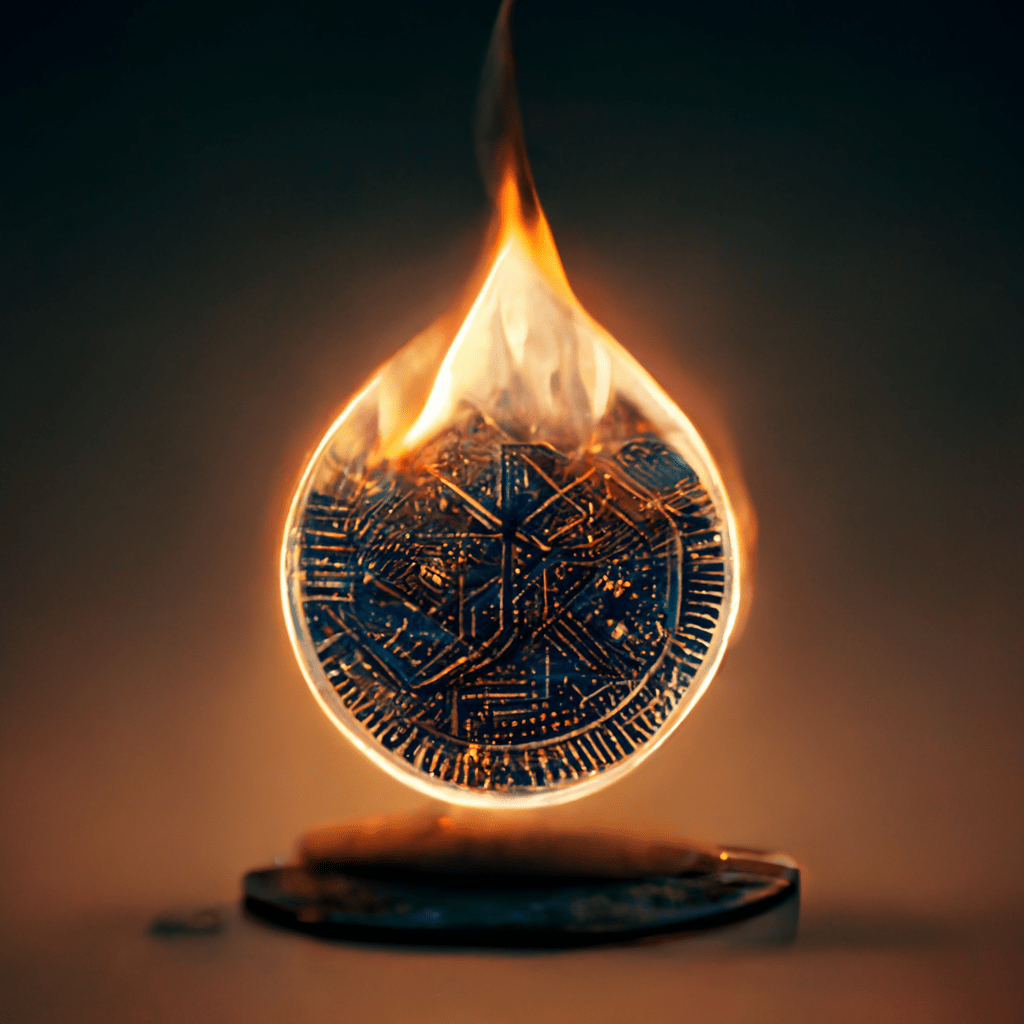Token Burn Mechanisms: Controlling The Supply Of New Cryptocurrencies

Executive Summary

Token burn mechanisms are a powerful tool that can be used to control the supply of new cryptocurrencies. By removing tokens from circulation, burn mechanisms can help to increase the scarcity and value of the remaining tokens. There are a variety of different token burn mechanisms, each with its own advantages and disadvantages. In this article, we will discuss the five most common types of token burn mechanisms: manual burns, scheduled burns, transaction-based burns, buyback and burn, and proof-of-burn.

Introduction
Cryptocurrencies are a new and rapidly evolving asset class. As the cryptocurrency market matures, we are seeing the emergence of a number of new and innovative token burn mechanisms. These mechanisms are designed to control the supply of new cryptocurrencies and to increase the scarcity and value of the remaining tokens.
Token Burn Mechanisms
There are a variety of different token burn mechanisms, each with its own advantages and disadvantages. The five most common types of token burn mechanisms are:
Manual Burns
Manual burns are the simplest type of token burn mechanism. With a manual burn, the project team manually sends a number of tokens to a burn address. This address is a special type of address that is designed to receive tokens but not send them. Once the tokens are sent to the burn address, they are effectively removed from circulation.
Advantages:
- Simplicity: Manual burns are easy to implement and manage.
- Transparency: Manual burns are transparent and verifiable.
- Control: The project team has complete control over the timing and amount of tokens that are burned.
Disadvantages:
- Discretionary: Manual burns are discretionary, which means that the project team can decide to burn tokens or not at their own discretion.
- Potential for Manipulation: Manual burns can be manipulated by the project team to artificially inflate the price of the token.
Scheduled Burns
Scheduled burns are a type of token burn mechanism that is executed automatically at regular intervals. The project team sets the frequency and amount of tokens that are burned in advance. This type of burn mechanism is more predictable and transparent than manual burns.
Advantages:
- Predictability: Scheduled burns are predictable and transparent, which makes it easier for investors to plan for the future.
- Transparency: Scheduled burns are transparent and verifiable, which helps to build trust with investors.
- Reduced Manipulation Risk: Scheduled burns are less susceptible to manipulation by the project team than manual burns.
Disadvantages:
- Less Flexibility: Scheduled burns are less flexible than manual burns. The project team cannot adjust the frequency or amount of tokens that are burned in response to changing market conditions.
- Potential for Missed Burns: Scheduled burns can be missed if the project team does not have the necessary resources to execute the burn.
Transaction-Based Burns
Transaction-based burns are a type of token burn mechanism that is triggered by a specific transaction or activity. For example, a project may choose to burn a certain percentage of tokens every time a user makes a transaction on their platform. This type of burn mechanism can help to reduce the supply of tokens in circulation and to increase the value of the remaining tokens.
Advantages:
- Predictability: Transaction-based burns are predictable and transparent, which makes it easier for investors to plan for the future.
- Transparency: Transaction-based burns are transparent and verifiable, which helps to build trust with investors.
- Reduced Manipulation Risk: Transaction-based burns are less susceptible to manipulation by the project team than manual burns.
Disadvantages:
- Less Flexibility: Transaction-based burns are less flexible than manual burns. The project team cannot adjust the frequency or amount of tokens that are burned in response to changing market conditions.
- Potential for Missed Burns: Transaction-based burns can be missed if the project team does not have the necessary resources to execute the burn.
Buyback and Burn
Buyback and burn is a type of token burn mechanism that involves the project team buying back tokens from the market and then burning them. This type of burn mechanism can help to reduce the supply of tokens in circulation and to increase the value of the remaining tokens.
Advantages:
- Reduced Supply: Buyback and burn mechanisms can help to reduce the supply of tokens in circulation, which can lead to an increase in the value of the remaining tokens.
- Increased Demand: Buyback and burn mechanisms can increase demand for the token, which can also lead to an increase in the price of the token.
- Reduced Manipulation Risk: Buyback and burn mechanisms are less susceptible to manipulation by the project team than manual burns.
Disadvantages:
- Costly: Buyback and burn mechanisms can be costly for the project team, as they require the project team to buy back tokens from the market.
- Potential for Missed Burns: Buyback and burn mechanisms can be missed if the project team does not have the necessary resources to execute the burn.
Proof-of-Burn
Proof-of-burn is a type of token burn mechanism that is used to secure a blockchain network. With proof-of-burn, miners are required to burn tokens in order to create new blocks. This type of burn mechanism helps to reduce the supply of tokens in circulation and to secure the blockchain network.
Advantages:
- Security: Proof-of-burn is a secure way to secure a blockchain network. Miners are required to burn tokens in order to create new blocks, which makes it more difficult for attackers to attack the network.
- Reduced Supply: Proof-of-burn helps to reduce the supply of tokens in circulation, which can lead to an increase in the value of the remaining tokens.
- Increased Demand: Proof-of-burn can increase demand for the token, which can also lead to an increase in the price of the token.
Disadvantages:
- Costly: Proof-of-burn can be costly for miners, as they are required to burn tokens in order to create new blocks.
- Potential for Missed Burns: Proof-of-burn mechanisms can be missed if miners do not have the necessary resources to execute the burn.
Conclusion
Token burn mechanisms are a powerful tool that can be used to control the supply of new cryptocurrencies. By removing tokens from circulation, burn mechanisms can help to increase the scarcity and value of the remaining tokens. There are a variety of different token burn mechanisms, each with its own advantages and disadvantages. The best type of burn mechanism for a particular project will depend on the specific goals of the project.
Keywords
- Token burn
- Cryptocurrency
- Tokenomics
- Deflationary token
- Buyback and burn
